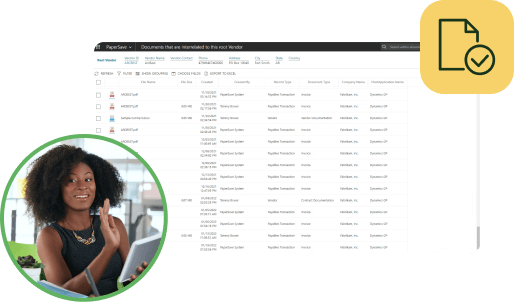The pandemic has completely upended the way businesses operate. For better or worse, the old ways of working are gone. And now, home offices, flexible working arrangements, and Zoom conference calls are the norm.
However, managing an organization and collaborating with colleagues in a remote business environment isn’t necessarily easier. In many ways, it requires more efficiency, flexibility, and investment than before.
Going paperless with cost-efficient document management solutions like PairSoft can simplify the transition to remote working for everyone involved.
Let’s look at three reasons why.
First of all, what does ‘going paperless’ mean?
In the past, going paperless meant eliminating paper-based documentation – like receipts, HR forms, and financial statements – by converting paper files into digital formats.
But now that many businesses have a distributed workforce going paperless requires more than just digitizing documents. To keep everything organized, companies need workflows that allow their teams to capture, share, and store the digitized files seamlessly.
For example, when an invoice has been successfully entered into the system, employees should be able to share the document and get approvals, without printing or scanning. They should also have a clear process for filing and retrieving documents in the cloud. Otherwise, they can wind up reverting to expensive and time-consuming “paper-based” processes in one way or another.
But the big question is: how does going 100% paperless actually improve business resiliency in the post-pandemic workplace? Let’s drill down a little deeper.
It simplifies remote workers’ tasks
First and foremost, going paperless benefits remote employees because it minimizes the effort required to handle documents like invoices, receipts, and contracts.
Rather than tediously processing every document by hand, document management systems allow you to easily enter data into selected fields. Once the information is there, you can route documents to the right stakeholder with a few clicks to get needed approvals.
This enables remote workers to focus more energy on maintaining equipment inventories, scheduling appointments, and sorting through billing documents. In turn, they can be as productive and efficient at home as they were when they worked in the office (if not more so).
Related reading: Improving collaboration between on-site and off-site workers with paperless solutions
It makes business processes more efficient
Many business processes require documentation, which, pre-pandemic, meant using tons of paper. But what many businesses didn’t know was that they weren’t just spending lots of money on paper. They were also spending an incredible amount of time doing manual work.
Going paperless changes that by allowing you to share, sign, and store documents online.
For instance, using electronic forms and digital signatures instead of paper-based files allows people to finish tasks faster and in fewer steps. The reason is: manual processes like printing documents, distributing them to relevant individuals or departments, and storing hard copies in filing cabinets takes much longer than doing it all electronically (i.e., sending them via email or messaging apps).
The same applies to various other tasks that were previously done using reams of paper. Filing expense reports, sending billing statements, distributing legal documents, and creating employee handbooks can now all be done electronically and, as such, takes much less time than before.
It reduces business costs
Some companies have already bounced back from the financial stress caused by the pandemic, but others haven’t. Regardless of which category you fall into, you can strengthen your business resiliency by cutting the cost of paper and its associated assets – like printers, scanners, and filing cabinets.
In fact, by going paperless, you can minimize the need to purchase filing cabinets (which take up 13.5% of office space, on average). At the same time, you eliminate the risk of misfiling a document, which can cost hundreds of dollars to reproduce. Most importantly, if your paperless processes leverage AP automation, you can also free up your employees to focus on more valuable tasks.
As a result, you’ll have a healthier financial standing, and your business will be better able to weather present and future economic challenges.
Having a distributed workforce requires flexible business processes that enable workers to function efficiently, no matter where they are or what their job function is. PairSoft’s Electronic Workflow Solution can help streamline your operations and reduce the need to deal with traditional paper-based processes. Get in touch with us for a free personalized demo.






